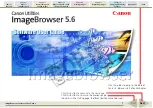
Running the DDL Compiler
Data Definition Language (DDL) Reference Manual — 426798-002
3 -2
Running DDL in Noninteractive Mode
OUT [ listing-destination ]
is the name of the output device or disk file to which the DDL compiler writes
its listing. If you omit the OUT run option, DDL sends the listing to its home
terminal. If you specify OUT but omit
listing-destination
, DDL does not
produce a listing. If
listing-destination
is a disk file name, DDL creates
a file with that name to contain the listing; if a file with that name already exists,
DDL terminates abnormally with a “file create” error.
NOWAIT
returns control immediately to the command interpreter. If NOWAIT is not
specified, the command interpreter suspends while DDL runs.
HIGHPIN { ON | OFF }
specifies the desired PIN range for the DDL process. If you specify ON, the
DDL compiler runs at a high process identification number if the HIGHPIN bit is
on in the DDL object file and if the other conditions for running the new process
at a high PIN are met. If you specify OFF, the DDL process runs at a low PIN
regardless of other considerations. If you omit this run option, the default
depends on the HIGHPIN setting of the associated TACL process. If you
access a D-series or G-series DDL process from a terminal on a system
running C-series software, DDL runs at a low PIN.
which is useful when the DDL program file’s volume is full or busy.
compiler-command
is any of the DDL compiler commands described in
Section 9, DDL Compiler
Commands
. Commas must separate multiple compiler commands.
The DDL compiler uses these run-time defaults:
•
If you do not fully qualify a file name with volume and subvolume names, DDL
qualifies the file name with the current default volume and subvolume names.
•
DDL creates all files, including dictionary files and language source files, with your
default file creation security. You can change the default security with the TACL
DEFAULT command.
Running DDL in Noninteractive Mode
DDL runs in noninteractive mode when statements and commands are entered
through a file specified in the IN run option of the DDL run command. In
noninteractive mode, the DDL compiler:
•
Accepts source input from
ddl-source-file
, which can contain any of the
statements and commands described in this manual.
















































